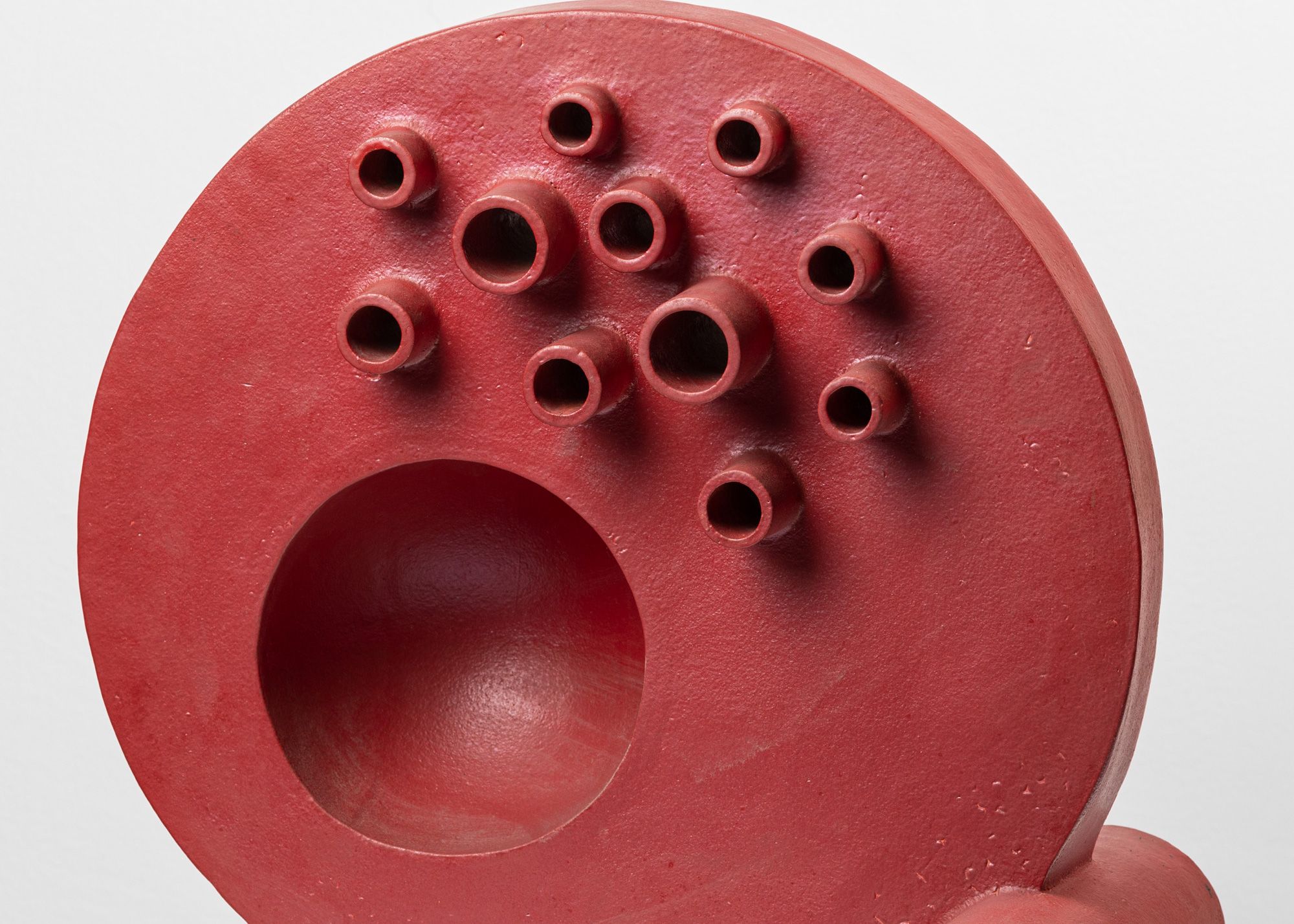Lajos Csertő
Space Age Plastics
| Venue: | acb Attachment |
| Date: | Jun 28 – Jul 26, 2024 |
| Opening: | Jun 20, 2024, 18:00–21:00 |
Description
The first solo exhibition of Lajos Csertő at acb showcases a special selection of sculptures by the versatile artist, known for his work in ceramics, glass, and sculpture. Hosted at acb Attachment, the exhibition combines the spirit of the Space Age with late modern aesthetics, embodied in Csertő's organic, plastic, and abstract forms. His unique ceramic sculptures evoke visions of alien, deep-sea, or outer-space organisms, inviting visitors to rediscover his oeuvre defined by biomorphic shapes.
Born in 1943 in Kecskemét, Hungary, Csertő initially pursued mechanical engineering studies in Dunaújváros and began his career in an iron foundry. In the 1970s, he established his studio in the same city while working actively throughout Hungary. A turning point in his artistic journey came in 1971 at a ceramic symposium in Siklós, where he met István Gádor, a significant figure in Hungarian modern ceramics. Gádor's influence was instrumental in Csertő's career, introducing him to the works of renowned 20th-century artists like Hans Arp, Constantin Brancusi, and Henry Moore. Their impact is evident in Csertő's late modernist aesthetics, structures, and forms.
The exhibition at acb Attachment highlights some of Csertő's wall-mounted ceramic reliefs, with the staging reminiscent of his 1970s exhibitions. During this period, he often created a unified platform for his works made of ceramics, stone, wood, glass, and metal. His second solo exhibition, held in 1978 in Kecskemét, was an open-air show that reflected the official cultural policy of 1970s Hungary, which was relatively tolerant of abstraction in applied arts such as ceramics and textiles, compared to painting and other visual arts.
Csertő's diverse interests extended beyond ceramics; he also created large-scale glass sculptures at the glass factories in Orosháza and Karcag. He maintained close ties to Kecskemét, where he worked for the enamel factory and built furnaces for the Ceramics Studio, receiving prestigious scholarships in 1979 and 1981. His creative vision also included utopian plans to channel water from the Danube through artificial lakes to Kecskemét, aimed at revitalizing the increasingly desertified Great Hungarian Plain. Throughout his career, he executed numerous architectural sculpture commissions for buildings designed by the architect Imre Makovecz.
Csertő's last major exhibition was held in 2015 at the Kunsthalle in Budapest, showcasing a selection of works that remained in his studio. This exhibition stands as a testament to his lifelong contribution to Hungarian art, characterized by his innovative blend of materials and visionary forms.

